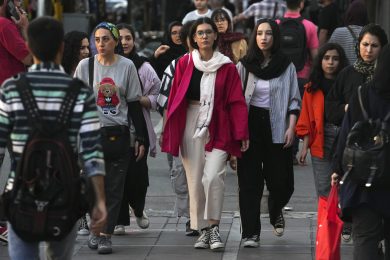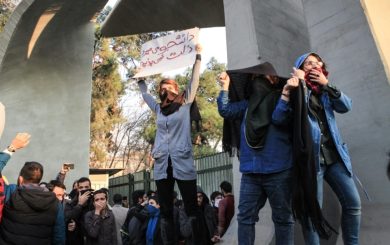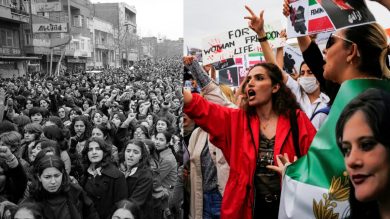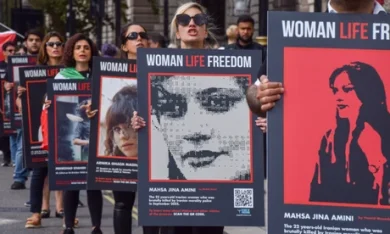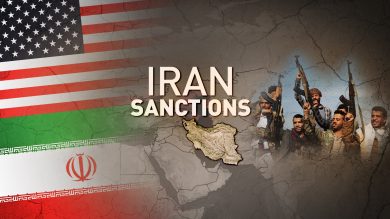The Islamic Revolutionary Guard Corps (IRGC) wields immense power in Iran, far beyond its military and political roles. One of its most effective tools for maintaining control and suppressing dissent is its domination of the media landscape. By manipulating information, spreading propaganda, and suppressing independent voices, the IRGC controls the narrative within Iran and shapes how the regime is perceived internationally. This information warfare plays a critical role in reinforcing the regime’s grip on power and stifling resistance movements.
This article explores how the IRGC uses media to control perception, the strategies it employs to suppress dissent and spread propaganda, and the broader implications for Iranian society and global audiences.
The IRGC’s Control Over Iran’s Media Landscape
1. Domination of State Media
The IRGC plays a significant role in managing Iran’s state-run media, including television, radio, and newspapers. These outlets serve as the regime’s mouthpiece, disseminating propaganda and shaping public perception.
• Islamic Republic of Iran Broadcasting (IRIB): The IRIB is Iran’s primary state-controlled media outlet, directly overseen by the Supreme Leader and heavily influenced by the IRGC. It broadcasts content that aligns with the regime’s ideological goals, suppressing alternative viewpoints.
• Narrative Control: State media amplifies the regime’s version of events, portraying protests as foreign-instigated conspiracies and promoting IRGC-led initiatives as national achievements.
2. Silencing Independent Media
The IRGC aggressively targets independent journalists and media outlets that challenge the regime’s narrative.
• Censorship: The IRGC blocks websites, bans publications, and censors content that is critical of the regime. Platforms that expose corruption, human rights abuses, or mismanagement are swiftly shut down.
• Intimidation and Arrests: Journalists face arrests, imprisonment, and torture for reporting on sensitive topics. Many are forced into exile to continue their work abroad.
3. Control Over Online Platforms
The IRGC recognizes the power of digital platforms and invests heavily in controlling online narratives.
• Social Media Restrictions: Platforms like Twitter, Facebook, and YouTube are blocked in Iran. While citizens use VPNs to access these sites, the IRGC monitors online activity and identifies dissenters.
• Surveillance: The IRGC uses advanced technologies to monitor social media, track activists, and suppress online dissent. Iranians who criticize the regime online risk harassment, arrest, or worse.
Strategies for Controlling Media and Perception
The IRGC employs a variety of sophisticated strategies to control media and perception, both domestically and internationally.
1. Propaganda Campaigns
The IRGC uses propaganda to shape public opinion and legitimize the regime’s actions.
• Glorifying the IRGC: State media frequently portrays the IRGC as a defender of national security and Islamic values, emphasizing its role in protecting Iran from “foreign threats.”
• Demonizing Opponents: Protesters, activists, and opposition groups are labeled as “terrorists,” “foreign agents,” or “morally corrupt” to delegitimize their demands.
2. Disinformation and Fake News
The IRGC spreads disinformation to confuse audiences and discredit dissenting voices.
• Fake Accounts and Troll Farms: The IRGC operates fake social media accounts to spread regime propaganda, attack critics, and amplify pro-government narratives.
• Blaming Foreign Powers: Disinformation campaigns frequently accuse Western governments, Israel, and Saudi Arabia of orchestrating protests and unrest in Iran.
3. Internet Blackouts
During periods of unrest, the IRGC enforces internet shutdowns to suppress the flow of information and prevent citizens from organizing protests.
• 2019 Protests: Amid nationwide demonstrations, the regime imposed a near-total internet blackout, allowing security forces to violently suppress dissent without global scrutiny.
• Controlling the Narrative: Blackouts prevent videos and photos of state violence from reaching international audiences, enabling the regime to maintain its narrative unchallenged.
4. International Media Manipulation
The IRGC uses state-funded international media outlets, such as Press TV, to influence global perceptions of Iran.
• Spreading Propaganda Abroad: Press TV broadcasts English-language content that promotes the regime’s policies and defends its actions, often framing Iran as a victim of foreign aggression.
• Targeting Diaspora Audiences: The regime attempts to influence Iranian expatriates by shaping how they view events in their homeland.
Impact on Iranian Society
The IRGC’s control over media has far-reaching consequences for Iranian society, limiting access to reliable information and eroding trust in public institutions.
1. Suppressing Dissent
By controlling the narrative, the IRGC delegitimizes protests and silences opposition voices, making it harder for citizens to organize and resist.
2. Promoting Fear and Conformity
The constant dissemination of propaganda, coupled with threats of surveillance and arrest, fosters a culture of fear that discourages dissent.
3. Limiting Awareness
Censorship and disinformation prevent many Iranians from understanding the true extent of the regime’s corruption, human rights abuses, and economic mismanagement.
Global Implications
The IRGC’s media control extends beyond Iran’s borders, impacting global perceptions of the country and its role in regional conflicts.
1. Undermining Democracy
The IRGC’s disinformation campaigns aim to disrupt democratic institutions and weaken international solidarity against its actions.
2. Targeting Activists Abroad
Iranian activists and journalists in exile are frequent targets of IRGC-led smear campaigns and cyberattacks, intended to discredit their work and intimidate them into silence.
3. Fueling Regional Tensions
By spreading propaganda and supporting proxy groups, the IRGC exacerbates conflicts in the Middle East, making it harder to achieve stability in the region.
How the World Can Respond
Countering the IRGC’s media control and disinformation requires a coordinated international effort.
1. Supporting Independent Media
• Funding Exiled Journalists: Provide financial and logistical support to independent Iranian journalists and media outlets operating in exile.
• Amplifying Dissenting Voices: Use global platforms to amplify the voices of Iranian activists and journalists.
2. Promoting Digital Freedom
• Providing Circumvention Tools: Offer VPNs, encrypted messaging apps, and other tools to help Iranians bypass censorship and communicate securely.
• Enhancing Cybersecurity: Protect activists and journalists from IRGC-led cyberattacks.
3. Exposing Disinformation
• Fact-Checking Initiatives: Support organizations that monitor and debunk IRGC propaganda and disinformation campaigns.
• Public Awareness Campaigns: Educate global audiences about the IRGC’s tactics to reduce their effectiveness.
4. Holding the Regime Accountable
• Targeted Sanctions: Impose sanctions on IRGC-affiliated individuals and entities responsible for media suppression and disinformation.
• Diplomatic Pressure: Push for international resolutions condemning the regime’s media control and human rights abuses.
Conclusion
The IRGC’s control over media and perception is a cornerstone of its power, allowing the regime to suppress dissent, manipulate public opinion, and maintain its grip on Iranian society. However, the courage of Iranian activists, journalists, and ordinary citizens offers hope for breaking this monopoly. By supporting independent voices, promoting digital freedom, and countering disinformation, the international community can help dismantle the IRGC’s narrative control and empower the Iranian people in their fight for freedom and justice.
Join Our Newsletter!
Stay informed with the latest updates, news, and ways to take action in the fight for justice and global security. Sign up now to get updates delivered straight to your inbox!

